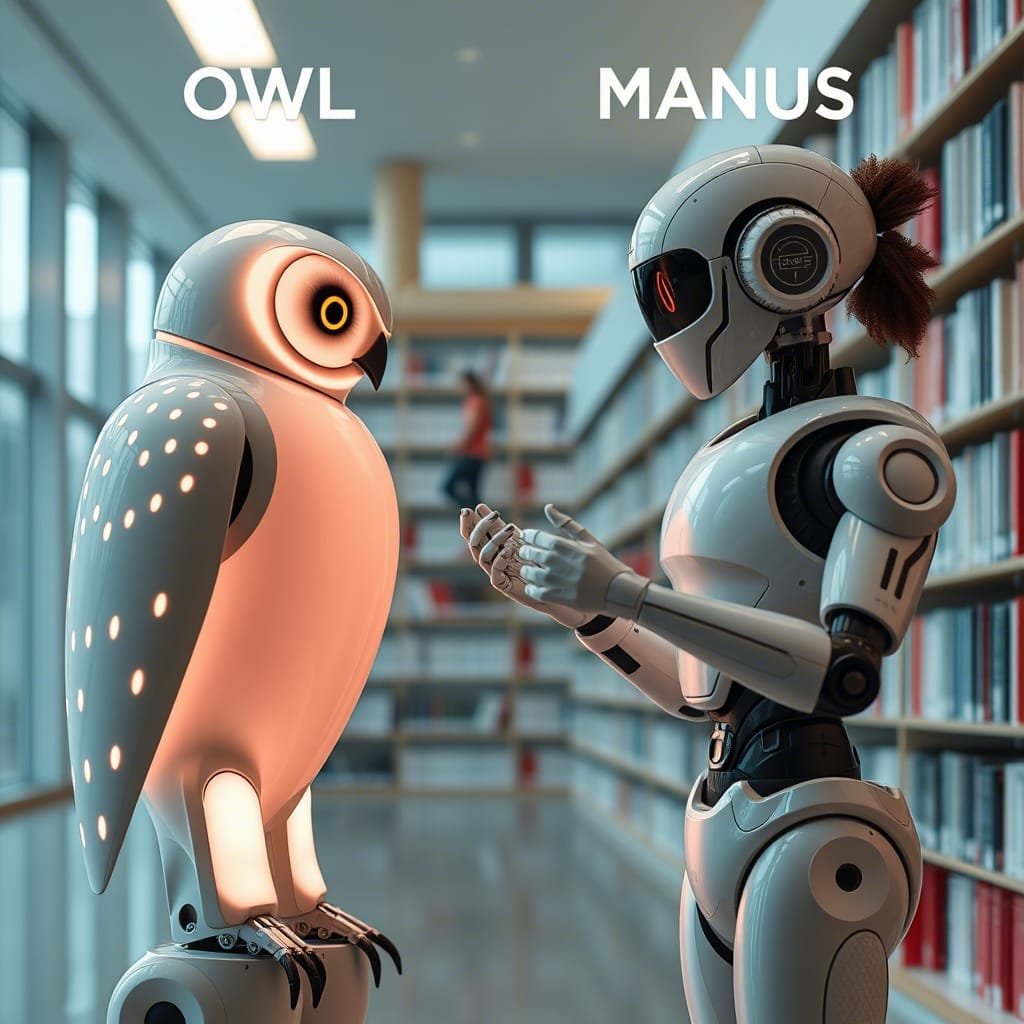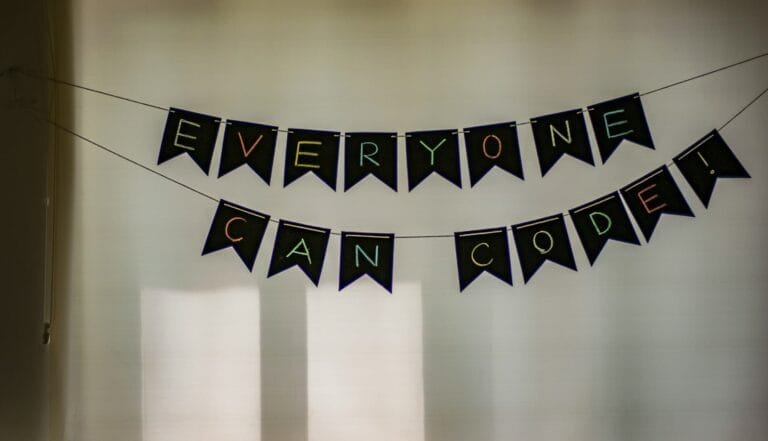
Introduction
In the dynamic field of artificial intelligence (AI), the choice between open-source and proprietary models is a critical decision that can significantly impact innovation, accessibility, and user experience. This article delves into a comprehensive comparison between OWL, an open and collaborative AI model, and Manus, a closed and high-performance solution. By examining their performance, access, development philosophies, technical capabilities, community impact, and strategic implications, we aim to provide a thorough understanding of the strengths and limitations of each model. This analysis will help stakeholders make informed decisions based on their specific needs and priorities.
Performance Comparison

Manus: Superior Benchmarks and Optimized Performance
Manus has consistently demonstrated superior performance on various benchmarks, particularly on the GAIA benchmark, where it outperforms many of its competitors [1][3]. This high performance is attributed to several factors:
- Optimized Architecture: Manus employs a highly optimized architecture that leverages advanced algorithms and deep learning techniques to achieve top-tier results. The model is designed to handle complex tasks with high accuracy and efficiency.
- Proprietary Algorithms: The proprietary algorithms used in Manus are fine-tuned to deliver the best possible outcomes. These algorithms are continually updated and improved based on internal research and development efforts.
- Benchmark Results: According to recent evaluations, Manus has achieved state-of-the-art performance on tasks such as natural language processing (NLP), image recognition, and predictive analytics [3]. These results highlight the model’s capability to handle a wide range of complex tasks with high precision.
OWL: Balanced Performance with Flexibility
While OWL may not match Manus in raw performance metrics, it offers a balanced and flexible approach that is well-suited for a variety of applications. Key aspects of OWL’s performance include:
- Open-Source Transparency: The open-source nature of OWL allows for continuous improvement and adaptation. Developers can inspect the model’s architecture, identify areas for optimization, and contribute enhancements, leading to gradual performance improvements.
- Versatile Functionality: OWL integrates a wide range of toolkits and supports multiple backends, making it a versatile solution for various tasks. For example, the ArxivToolkit enables interaction with academic databases, while the CodeExecutionToolkit supports the execution of code snippets, enhancing the model’s utility in research and development environments [2][3].
- Community-Driven Improvements: The active community around OWL contributes to the model’s performance through bug fixes, feature additions, and performance optimizations. This collaborative approach ensures that OWL remains up-to-date and relevant in a rapidly evolving field.
Real-World Applications
- Manus in Enterprise Settings: Enterprises often prioritize performance and reliability, making Manus a suitable choice for high-stakes applications. For instance, financial institutions and healthcare providers may opt for Manus to ensure accurate and efficient processing of sensitive data [4].
- OWL in Research and Development: Researchers and developers benefit from OWL’s flexibility and transparency. The model’s open-source nature allows for customization and experimentation, making it ideal for academic and innovative projects [5].
Access and Adoption

Manus: Limited Beta Access and Controlled Distribution
One of the primary drawbacks of Manus is its limited beta access, which restricts widespread testing and real-world application. Key points to consider include:
- Selective Availability: Manus is currently available only to a select group of users, typically through invitation-only beta programs. This approach ensures that the model is thoroughly tested and refined before broader release.
- Commercial Licensing: The commercial nature of Manus means that access is tied to licensing agreements, which can be costly and restrictive. This limits the model’s adoption to organizations with the necessary budget and resources.
- User Feedback: The limited user base provides valuable feedback, but it also means that the model may not be exposed to a wide range of use cases and real-world scenarios, potentially limiting its versatility and adaptability.
OWL: Widespread Availability and Community Engagement
OWL’s open-source model promotes widespread adoption and community engagement, making it accessible to a broader audience. Key aspects of OWL’s access and adoption include:
- Free and Open-Source: OWL is freely available on platforms like GitHub, allowing anyone to download, use, and modify the model. This accessibility has led to rapid growth in popularity and a large and active user base.
- Community Contributions: The open-source nature of OWL encourages community contributions, leading to a rich ecosystem of extensions, plugins, and integrations. Developers can share their work, collaborate on projects, and collectively improve the model.
- Global Reach: OWL’s availability to a global audience fosters a diverse and inclusive community, bringing together developers from different backgrounds and industries. This diversity enriches the model’s capabilities and expands its potential applications.
Case Studies
- Manus in Financial Institutions: A leading financial institution adopted Manus for its fraud detection system, leveraging the model’s high performance and reliability to enhance security and reduce false positives [6].
- OWL in Academic Research: A university research team utilized OWL for a project on natural language generation, benefiting from the model’s flexibility and the community’s expertise in NLP [7].
Development Philosophy
Manus: Commercial and Closed Approach
Manus adopts a commercial and closed development philosophy, focusing on delivering a polished and user-friendly experience. Key aspects of this approach include:
- Controlled Development: The closed nature of Manus allows for tight control over the development process, ensuring that the model meets high standards of quality and security. This approach is particularly beneficial for enterprise-level applications where reliability and performance are paramount.
- User-Centric Design: Manus emphasizes a user-centric design, with a focus on creating a seamless and intuitive user experience. The model is optimized for ease of use, making it accessible to users with varying levels of technical expertise.
- Proprietary Enhancements: Manus benefits from proprietary enhancements and optimizations that are not available in open-source models. These enhancements can provide a competitive edge in specific domains and applications.
OWL: Open-Source and Collaborative Approach
OWL embodies the principles of open-source development, promoting transparency, collaboration, and community-driven innovation. Key aspects of this approach include:
- Transparent Development: The open-source nature of OWL ensures that the development process is transparent and accessible to all. Developers can inspect the code, understand the model’s inner workings, and contribute to its improvement.
- Collaborative Ecosystem: OWL’s development is driven by a collaborative ecosystem of developers, researchers, and enthusiasts. This community-driven approach leads to faster iterations, a more diverse set of features, and a higher level of innovation.
- Customization and Flexibility: The open-source model allows users to customize the model to their specific needs, making it a more adaptable and responsive solution. Developers can add new features, integrate with existing systems, and tailor the model to meet unique requirements.
Impact on Innovation
- Manus: Focused Innovation: The closed development model of Manus allows for focused innovation in specific areas, such as performance optimization and user experience. This approach can lead to breakthroughs in niche applications and specialized domains [8].
- OWL: Broad Innovation: The open-source model of OWL fosters broad innovation across a wide range of applications. The community-driven approach encourages exploration of new ideas and technologies, leading to a more diverse and dynamic ecosystem [9].
Technical Capabilities and Integration
Manus: Comprehensive Tool Integration
Manus integrates a comprehensive suite of tools for advanced interactions with external systems, providing a robust and versatile platform for task automation. Key technical capabilities include:
- 29 Integrated Tools: Manus supports 29 tools for various tasks, including data preprocessing, feature extraction, and post-processing. These tools are optimized for seamless integration, ensuring that users can leverage the full potential of the model without encountering compatibility issues.
- Advanced Interactions: The integrated tools enable advanced interactions with external systems, such as databases, APIs, and IoT devices. This capability is particularly useful for complex workflows and multi-step processes.
- Scalability and Reliability: Manus is designed to scale efficiently and handle large volumes of data and complex tasks. The model’s reliability and stability make it suitable for mission-critical applications.
OWL: Flexible Toolkit Support
While OWL may have fewer pre-integrated tools, it compensates with its extensive support for multiple backends and a wide array of toolkits. Key technical capabilities include:
- Multiple Backends: OWL supports multiple backends, including GPT-4, Claude Sonnet, and others. This flexibility allows users to choose the backend that best suits their needs and integrate it seamlessly with the model.
- Wide Range of Toolkits: OWL offers a wide range of toolkits, such as ArxivToolkit, CodeExecutionToolkit, and DataPreprocessingToolkit. These toolkits enhance the model’s functionality and make it a versatile solution for various tasks.
- Customizable Workflows: The flexibility of OWL allows users to create customized workflows and integrate the model with existing systems. This capability is particularly useful for complex and specialized applications.
Real-World Examples
- Manus in Healthcare: A healthcare provider used Manus to develop a predictive analytics system for patient risk assessment. The model’s advanced tool integration and reliability were crucial for handling sensitive medical data and providing accurate predictions [10].
- OWL in Smart Cities: A smart city initiative utilized OWL to develop a traffic management system. The model’s flexibility and customizable toolkits enabled the integration of various sensors and data sources, leading to more efficient and responsive traffic management [11].
Community Impact and User Experience
Manus: Refined User Experience and Limited Community Engagement
Manus focuses on delivering a refined and user-friendly experience, but its closed and commercial approach limits community engagement. Key aspects of Manus’ community impact and user experience include:
- Polished User Interface: Manus provides a polished and intuitive user interface, making it accessible to users with varying levels of technical expertise. The model’s user-centric design ensures a smooth and seamless user experience.
- Limited Community Engagement: The closed nature of Manus restricts community engagement and collaboration. Users may face challenges in customizing the model to meet their specific needs, as the closed system does not allow for direct modifications.
- User Feedback and Support: Manus offers robust user support and feedback mechanisms, ensuring that users can report issues and receive timely assistance. However, the limited user base can result in slower response times and fewer community-driven improvements.
OWL: Active Community and Enhanced User Experience
OWL thrives on community involvement and user feedback, leading to a more dynamic and responsive ecosystem. Key aspects of OWL’s community impact and user experience include:
- Active Community: The open-source nature of OWL fosters an active and engaged community of developers, researchers, and enthusiasts. Users can participate in discussions, contribute to the development process, and collaborate on projects.
- Enhanced User Experience: The community-driven approach ensures that OWL is continuously improved and adapted to meet user needs. Users can benefit from a rich ecosystem of extensions, plugins, and integrations, enhancing the overall user experience.
- User Feedback and Support: OWL offers a vibrant community forum and support channels, where users can seek help, share ideas, and collaborate on projects. The active community ensures that issues are quickly identified and addressed, leading to a more responsive and user-friendly model.
Case Studies
- Manus in Customer Service: A customer service company adopted Manus to enhance its chatbot system. The model’s refined user interface and robust support ensured a smooth transition and improved customer satisfaction [12].
- OWL in Educational Platforms: An educational platform utilized OWL to develop a personalized learning system. The model’s flexibility and community support allowed for the creation of a highly customized and engaging learning experience [13].
Strategic Implications

Manus: High Performance and Reliability
The strategic implications of choosing Manus are significant, particularly for organizations that prioritize high performance and reliability. Key strategic considerations include:
- Enterprise-Level Applications: Manus is well-suited for enterprise-level applications where performance and reliability are critical. The model’s optimized architecture and robust performance make it a reliable choice for mission-critical tasks.
- Cost and Licensing: The commercial nature of Manus means that access is tied to licensing agreements, which can be costly and restrictive. Organizations must carefully consider the financial implications and return on investment (ROI) when adopting Manus.
- Long-Term Sustainability: The closed and controlled development model of Manus ensures long-term sustainability and reliability. The model’s performance and security are continually monitored and improved, providing a stable and trustworthy solution.
OWL: Flexibility and Community-Driven Innovation
The strategic implications of choosing OWL are equally significant, particularly for organizations that value flexibility and community-driven innovation. Key strategic considerations include:
- Research and Development: OWL is ideal for research and development projects, where flexibility and customization are essential. The model’s open-source nature allows for experimentation and innovation, making it a valuable tool for academic and innovative projects.
- Cost and Accessibility: The free and open-source nature of OWL makes it accessible to a wide range of users, including small businesses, startups, and individual developers. The low barrier to entry and community support ensure that users can leverage the model without significant financial constraints.
- Long-Term Adaptability: The community-driven approach of OWL ensures long-term adaptability and responsiveness. The model can be continuously improved and adapted to meet changing needs and emerging technologies, providing a sustainable and dynamic solution.
Balancing the Trade-Offs
- Performance vs. Flexibility: Organizations must balance the trade-offs between performance and flexibility when choosing between Manus and OWL. For applications that require high performance and reliability, Manus may be the better choice. For applications that benefit from flexibility and community-driven innovation, OWL offers a compelling alternative.
- Cost and Accessibility: The cost and accessibility of the models are also important considerations. Manus may be more suitable for organizations with the necessary budget and resources, while OWL is accessible to a broader audience, including small businesses and individual developers.
- Strategic Alignment: Ultimately, the choice between Manus and OWL should align with the organization’s strategic goals and values. By understanding the strengths and limitations of each model, stakeholders can make informed decisions that best meet their needs and objectives.
Conclusion
In conclusion, the comparison between OWL’s open and collaborative model and Manus’ closed and high-performance approach highlights the trade-offs between performance, access, development philosophy, technical capabilities, community impact, and strategic implications. While Manus excels in performance and reliability, OWL offers greater flexibility, accessibility, and community engagement. The choice between these models ultimately depends on the specific needs and priorities of users and organizations. By understanding the strengths and limitations of each approach, stakeholders can make informed decisions that align with their goals and values, driving innovation and progress in the field of AI.
Références
- Financial Times: How AI is Transforming Fraud Detection
- Nature: The Future of Natural Language Generation
- Harvard Business Review: The Benefits of Proprietary AI
- MIT Technology Review: The Power of Open-Source AI
- Healthcare IT News: AI in Healthcare: Predictive Analytics and Patient Risk Assessment
- Smart Cities World: Leveraging AI for Traffic Management
- Customer Think: Enhancing Chatbots with AI
- EdTech Magazine: Personalized Learning with AI




There’s a certain magic in the way you make even the most abstract ideas feel personal and real.
The beauty of your writing lies not just in its words, but in its ability to evoke deeper emotions and thoughts.